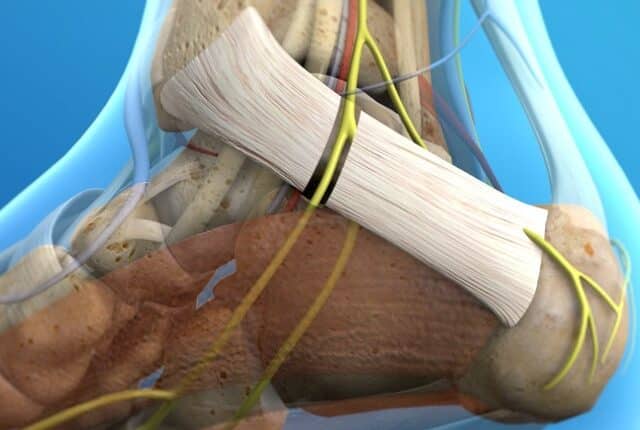Understanding Your Tarsal Tunnel Release Surgery
This page provides general information on tarsal tunnel surgery. It is not meant to replace any personal conversations that you might wish to have with your physician or other member of your healthcare team. Not all of the information here will apply to your individual treatment plan or outcome.

Tarsal Tunnel Release
Tarsal Tunnel Release is a procedure designed to decompress the nerve that runs through the tarsal tunnel, a narrow space on the inside of the ankle that is covered with a thick ligament (called the flexor retinaculum) that protects and maintains the arteries, veins, tendons and nerves. If conservative treatment fails to reduce and relieve symptoms of tarsal tunnel syndrome, the covering over the tarsal tunnel (flexor retinaculum) is released to allow for decompression of the structures in that area (similar to a carpal tunnel procedure done in the wrist). This procedure routinely has an incision on the inside (medial) ankle with stitches. The wound is then dressed with a sterile bandage to help prevent post-operative wound infection. The stitches are then removed 2-3 weeks after surgery. After surgery, you will be touch-down weight bearing in a fracture boot in order to allow the incision site to heal. After sutures are removed, your provider will direct you on your transition to full weight bearing. Total recovery from this procedure generally takes 6-8 weeks and symptoms can continue to improve and resolve for the next 6-12 months following surgery.
References:
1American College of Foot and Ankle Surgeons
2American Academy of Orthopedic Surgeons
3Manganaro D, Dollinger B, Nezwek TA, et al. Anatomy, Bony Pelvis and Lower Limb, Foot Joints. [Updated 2023 Aug 21]. In: StatPearls [Internet]. Treasure Island (FL): StatPearls Publishing; 2024 Jan-. Available from: https://www.ncbi.nlm.nih.gov/books/NBK536941/







